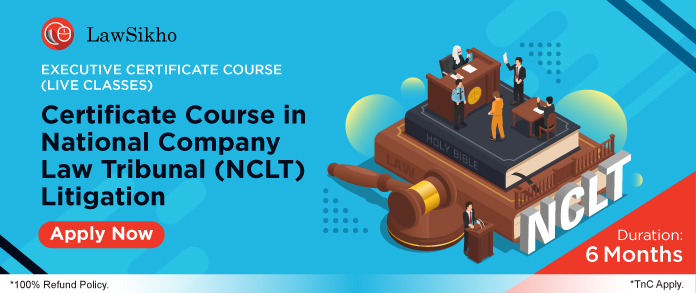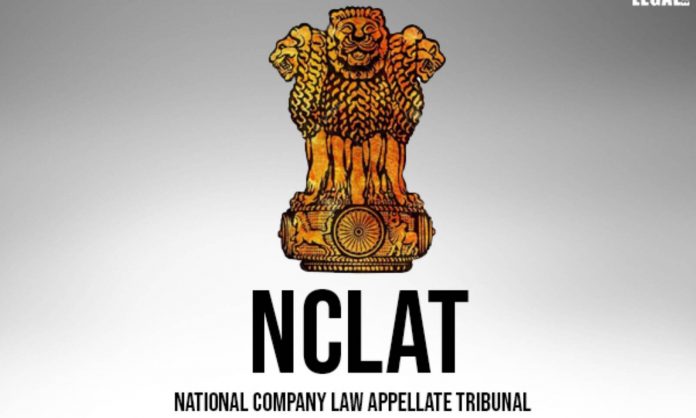This article has been written by Abhilekh Tiwari pursuing the Certificate Course in National Company Law Tribunal (NCLT) Litigation from LawSikho. The article has been edited by Zigishu Singh (Associate, LawSikho) and Dipshi Swara (Senior Associate, LawSikho).
[Disclaimer for the readers: This piece has been written in the context of laws and facts prevailing at the time of publication. Kindly be updated with any new development post-publication of this piece.]Hon’ble Supreme Court of India, on 26th July, 2021 passed judgement in the case of M/s Orator Marketing Pvt. Ltd v. M/s Samtex Desinz Pvt. Ltd. and upheld that interest free loan would be considered as financial debt under Section 5(8) of the Insolvency and Bankruptcy Code, 2016.
Introduction
Section 5(8) of the Insolvency and Bankruptcy Code, 2016 (IBC) states that financial debt would be a debt that has a time value attached to it i.e. there must be some interest deriving from the amount given as debt. Most recently in the case of M/s Orator Marketing Pvt. Ltd v. M/s Samtex Desinz Pvt. Ltd., Hon’ble Supreme Court gave a contrary view to this established principle. This article attempts to analyse the issues and arguments in the case and the rationale behind such interpretation of the Section 5(8).
Factual Background
M/s Tata Capital Financial Services (Tata Capital) provided a secured loan of 14 crore to M/s Samtex Desinz Pvt. Ltd. (Samtex). Later, M/s Sameer Sales Pvt. Ltd. (Sameer Sales) which is a sister concern of Samtex lent an interest free loan of 1.60 crores to Samtex for two years as the initial loan was not sufficient for the capital requirements of the Samtex. Sameer Sales later assigned the debt to M/s Orator Marketing Pvt. Ltd. (Orator).
Designation of the relevant parties
Tata Capital – Institutional Lender
Sameer Sales – Sister Concern of Samtex
Samtex – Corporate Debtor
Orator – Appellant, Financial Creditor
Hon’ble National Company Law Tribunal (NCLT) refused to admit Section 7 application initiated by the Financial Creditor Orator stating that the loan is interest free and hence has no time value of money attached to it. Further, due to no time value attached to the amount disbursed, the debt would not be considered as financial debt under Section 5(8) of the IBC.
Later, an appeal was filed before National Company Law Appellate Tribunal (NCLAT), whereby the order of the NCLT was upheld citing the same reason. Finally appeal was filed before the Hon’ble Supreme Court and the Division Bench comprising Justice Indira Banerjee and Justice V. Ramasubramanian, delivered a judgement stating that interest free loans would fall under the category of Financial Debt under Section 5(8) of the IBC.
Issue
Whether the interest free loan amount can be a financial debt Section 5(8) of the IBC?
Basis of decision in NCLT and NCLAT
The NCLT relied on the case of Dr BVS Lakshmi v. Geometrix Laser Solutions Private Limited in which the concept of disbursement was dealt with and it was laid by the NCLAT that if any creditor claims to be financial creditor as under Section 5(8) of IBC then it has to be shown that the debt was disbursed against the time value of money. Similarly, the case of Shreyans Realtors Private Limited & Anr v. Saroj Realtors & Developers Private Limited was also referred wherein a certain unsecured loan amount was disbursed by the respondent against 24% interest which was being claimed as a financial debt. However, when the case at hand was previously in NCLT, it was found that the loan was never accepted with an interest but rather it was an interest free loan. Based on these precedents NCLT New Delhi held that the debt cannot be considered as a financial debt under Section 5(8) of the IBC as there is no time value of money attached to it.
Later, the Appellant filed an appeal before the NCLAT. NCLAT perused the Loan Agreement between the parties and interpreted the meaning of financial debt. Clause 3 of the ‘Terms and Conditions’ of the loan agreement states that the loan is an unsecured loan and Clause 4 of the same states that there shall be ‘NIL’ interest. Hence, it is clear that the loan was an interest free loan and would not be within the ambit of financial debt.

Decision by Supreme Court
– Hon’ble Supreme Court stated that NCLT and NCLAT have patently erred in the judgement. The meaning and interpretation of financial debt should not be done in isolation and without considering the context.
– The legislative intent must be looked upon while interpreting any provision of any statute. It should be considered that what mischief was sought to be removed through any legislation.
– In case of Section 7 application under IBC, the Adjudicating Authority has to look upon the records of information utility or any evidence of default.
– Further, the IBC is a beneficial legislation and its aim is not just to recover the debt for the creditors but also to revive the debtor.
– The ‘financial debt’ cannot be interpreted in isolation without acknowledging the other relevant definitions which are ‘claim’ under Section 3(6), ‘corporate debtor’ in Section 3(8), ‘creditor’ under Section 3(10), ‘debt’ under Section 3(11), ‘default’ under Section 3(12), ‘financial creditor’ under Section 5(7) along with Section 7 of the IBC. Financial creditor can file an application if there is default and if there is any question with regard to the eligibility of the person filing Section 7 application then it has to be interpreted in accordance with the terms used in the respective provisions.
– The NCLT and NCLAT did not consider the words ‘if any’ in the definition of Financial Debt under Section 5(8). The initial wording of Section 5(8) of the IBC states that financial debt is a debt along with interest, if any, which is disbursed against time value of money. The words ‘if any’ denote that if there is no interest then the principal amount would qualify as financial debt. Further, the clause (f) of Section 5(8) of the IBC states about the commercial effect of borrowing which in the case at hand is present. Furthermore, Section 5(8)(a) of the IBC is inclusive in nature and the clauses are illustrative and not exhaustive.
– The Supreme Court referred the case of Dilworth v. Commissioner of Stamps (Privy Council) to interpret the term ‘include’. It was stated in this case that the term ‘include’ is added in the interpretation clause to enlarge and comprehend the scope of meaning.
– However, the Supreme Court also stated that the enlargement of the scope of the term ‘include’ should not defeat the purpose of the statute. For this the court referred to the case of Anuj Jain, Interim Resolution Professional for Jaypee Infratech Ltd. V. Axis Bank Ltd wherein the Avoidance Transactions were discussed at length. It was stated in this case that the root requirements disbursement against time value of money cannot be overlooked because if overlooked then any transaction could come within the ambit of financial debt.
– Finally the court stated that under IBC, the Financial Creditor is entrusted by the legislature to revive a financially distressed company and is involved with the Corporate Debtor since its inception by providing the necessary financial support. Hence, there is no reason to exclude a loan which was for the working capital of the Corporate Debtor to be outside the purview of Financial Debt.
Analysis
Time value of money means that the money which is being given will be more at the time of return. This would be through the interest on the principal amount. In the case at hand, even if we acknowledge the words ‘if any’, the provision also mentions the consideration of time value of money. Hence, in the present case there is no consideration of time value of money as there was no interest against the amount disbursed. This issue was not answered in the judgement at length which may create some issues in the future. However, it should also be acknowledged that if only ‘interest’ per se would have been laid a sole criteria then ends of justice might have been affected as the Appellant/Financial Creditor would have no other suitable mechanism for recovery of the interest free amount disbursed. Hence, at times it becomes necessary to consider each case in an innovative and unique way and in furtherance of complete justice, courts may slightly deviate from the established precedent.
Conclusion
The basis of the decision were the words ‘if any’. Section 5(8) of the IBC states that financial debt is the debt which may have interest attached to it. In the present case a company took an interest free loan with another and since there was no interest then time value of money could not exist and hence the NCLT and NCLAT dismissed the Section 7 application. However, the Supreme court held that the definition of financial debt should be interpreted in context and the words ‘if any’ in Section 5(8) cannot be overlooked. And hence, it is finally a precedent that interest free loans would fall within the purview of financial debt for the purpose of filing Section 7 application under IBC.
References
- https://www.khaitanco.com/thought-leaderships/Interest-free-term-loan-is-a-financial-debt-as-per-the-Insolvency-and-Bankruptcy-Code-2016
- https://taxguru.in/corporate-law/financial-creditors-ibc.html/comment-page-1/
- https://nclat.nic.in/Useradmin/upload/17031205495b6a71f55eb74.pdf
- https://www.mca.gov.in/Ministry/pdf/TheInsolvencyandBankruptcyofIndia.pdf
- https://main.sci.gov.in/supremecourt/2021/9171/9171_2021_40_30_28762_Judgement_26-Jul-2021.pdf
Students of Lawsikho courses regularly produce writing assignments and work on practical exercises as a part of their coursework and develop themselves in real-life practical skill.
LawSikho has created a telegram group for exchanging legal knowledge, referrals and various opportunities. You can click on this link and join:
https://t.me/joinchat/J_0YrBa4IBSHdpuTfQO_sA
Follow us on Instagram and subscribe to our YouTube channel for more amazing legal content.
 Serato DJ Crack 2025Serato DJ PRO Crack
Serato DJ Crack 2025Serato DJ PRO Crack










 Allow notifications
Allow notifications



